Metal or Wood Peel: Which Pizza Tool Is Better?
Metal vs. Wood Pizza Peel decisions can make a big difference in your homemade pizza adventures.
Essential tools help transfer pizzas in and out of hot ovens safely.
Wood peels have a traditional appeal with natural non-stick properties that many home cooks appreciate.
The rustic charm also adds to presentation when serving directly on them.
Meanwhile, metal versions offer durability and a thinner edge that slides under pizzas more easily.
The lightweight nature of aluminum models reduces arm fatigue during busy cooking sessions.
Both materials have passionate supporters among professional pizzaiolos for good reasons.
All the important details about these pizza-making companions await you in the following sections.
Perfect Pizza Peel: The Overview
Pizza peels come in different shapes, sizes, and materials, which helps when selecting the right one for your needs.
These tools, sometimes called pizza sliders or shovels, serve a simple purpose - getting pizzas in and out of hot ovens safely.
Most pizza peels are made from wood or metal, though plastic and perforated metal options exist too.
The basic design features a flat blade connected to a handle for easy maneuvering.
Some pizza peels have solid carrying surfaces while others feature perforated surfaces with small holes.
Those holes allow excess flour to fall away during transfer and let steam escape, which prevents the dough from sticking to the surface.
This little detail can make a big difference when you're sliding that perfectly topped pizza into a blazing oven.
Exploring Wooden Pizza Peels
Wood remains the most popular material for pizza peels, though handles can be made from wood, plastic, or metal. Hardwood varieties like oak and maple, often with slightly rough surfaces, are used to prevent sticking and improve airflow beneath the pizza.
While older peels were made from thick wood, modern versions also use acacia, agarwood, or bamboo. Wooden peels offer a classic, vintage look and, with proper care, can last for many years.
The Metal Pizza Peel
Metal pizza peels, crafted from stainless steel or aluminum, come with either perforated or solid surfaces. These tools are lighter than wooden ones due to their thinner design, making them easier to handle during cooking.
Cleaning is a breeze since metal peels don't require special drying methods after use. Unlike wooden peels that absorb odors and can develop strange tastes over time, metal versions stay flavor-neutral throughout their use.
Some skill is necessary to prevent dough from sticking to the surface. Improper technique may cause the pizza to adhere to the peel, so a gentle touch and proper preparation are essential for success.
Metal vs. Wood Pizza Peel: What Set Them Apart
Wood and metal pizza peels differ in several important ways that can guide your selection. This table will show you.
| Feature | Wooden Pizza Peel | Metal Pizza Peel |
| Appearance | Natural, vintage look; usually light yellow or brown; fewer design options; versatile handle. | Metallic silver color; more design variety; usually round or rectangular. |
| Durability | Prone to cracking under heat; shorter lifespan; made from hardwoods like maple, teak, bamboo. | More heat-resistant and durable; commonly stainless steel or aluminum (stainless preferred). |
| Weight | Heavier due to thick carrying surface. | Lighter and thinner, easier to handle. |
| Grip & Taste | Better grip; less dough slipping; may preserve pizza flavor slightly. | Slippery when oily; dough can slide off; no impact on flavor. |
| Cleaning & Maintenance | Requires careful drying and maintenance to avoid mold; vinegar cleaning recommended. | Easy to clean with soap and water; low maintenance. |
| Application | Absorbs moisture, helps slide dough; good for launching pizzas; no pizza screen needed. | Better heat conductivity; thin surface slides easily under pizza for removal. |
| Safety & Price | Food-safe, no chemical reactions; generally more expensive. | Some metals (like aluminum) may react over time; usually cheaper. |
| Best Use | Ideal for placing pizzas onto stone; enhances flavor; preferred for home use with care. | Great for removing pizzas from oven; long-lasting; better for frequent use or commercial kitchens. |
| Handle Length & Shape | Handles vary; can adjust; usually solid wood. | Often includes longer handles; available in perforated or solid surfaces for excess flour removal. |
Appearance
A wooden pizza peel looks more natural and appealing than a metal one, giving off a warm, vintage vibe that feels comfortable to use. Typically, wooden peels come in light yellow or brown shades, depending on the wood type, while metal peels are usually metallic silver.
Both wood and metal peels often come in round or rectangular shapes. However, wooden peels tend to have simpler designs compared to metal ones.
The handle on a wooden peel is flexible and can often be adjusted to fit your needs.
Durability
Wood pizza peels tend to crack when they face high heat for too long because they can't stretch or expand like other materials can. Their lifespan is much shorter compared to metal peels, which is something to keep in mind when shopping.
Common woods used for pizza peels include maple, beech, black walnut, teak, and bamboo, while metal versions come in aluminum or stainless steel. For the best results, stainless steel makes a better choice since aluminum may react with your food.
Metal peels win the durability contest hands down when it comes to handling heat. This difference in longevity should factor into your decision when choosing between wood and metal options for your pizza-making adventures.
Weight
Metal pizza peels win on weight compared to their wooden counterparts, making them easier to handle during pizza night. Wooden peels may catch everyone's attention with their traditional look, but that thicker surface adds noticeable heft.
For home cooks focused more on function than style, metal peels offer a practical advantage without the extra weight. Many pizza lovers appreciate this lighter option when moving pizzas in and out of hot ovens repeatedly.
The slimmer profile of metal peels also makes storage simpler in busy kitchens where space matters.
Application
Pizza peels come in two main types for different purposes: launching and turning peels. The launching kind features a long handle attached to a solid, broad, flat surface made of wood or metal, perfect for sliding your pizza into the oven.
Many people struggle with this type because its large surface makes rotating the pizza difficult, and trying to turn the pizza by hand can result in painful burns from the intense heat. The turning peel solves this problem with its smaller circular shape and perforated surface, typically constructed with a metal head and wooden or rubber handle for better grip.
Grip And Taste
Pizza dough sticks less to wooden peels than metal ones during preparation. Most bakers add oil when making pizza, which can be tricky on metal surfaces as the dough tends to slide off unless you have good technique.
Wooden peels also enhance the pizza's flavor in subtle ways that metal peels simply can't match. The natural material doesn't react with ingredients or affect taste negatively, making it a favorite among home cooks who care about authentic results.
For beginners especially, wooden peels offer more forgiveness and better control when transferring your creation to a hot oven.
Cleaning And Maintenance
Wooden pizza peels demand tricky upkeep compared to their metal counterparts. For wood versions, careful cleaning with vinegar solution helps protect the surface from damage.
The real challenge comes after washing - thorough drying is absolutely necessary to prevent mold and bacteria growth on your wooden tool. Metal peels offer a much simpler alternative since they only need a quick wash with regular soap and water.
No special techniques or drying rituals are required, making them far more convenient for regular pizza makers who want less hassle between delicious homemade pies.
Safety And Price
Wood peels offer better safety since they don't react with food the way metal ones do. This non-reactive quality means wooden peels pose no health risks to your pizza-making process.
Metal peels, especially aluminum types, may release toxins after long-term use, which could be concerning. The downside of choosing wood is the higher price tag compared to metal options.
If money is tight in your kitchen budget, a metal pizza peel might be the more sensible choice despite the safety advantages that wood provides. Both options have their place depending on what matters most to you - maximum safety or keeping costs down while still making delicious pizzas at home.
Choosing the Perfect Pizza Peel for Baking
Pizza peels come in many shapes and sizes, making your choice a bit tricky at first glance. When selecting the right one for your home kitchen, a few key factors can guide your decision.
Size
Pizza peels come mainly in two sizes: standard (around 18 inches) and maxi (about 36 inches). The standard size is ideal for homemade pizzas, while the larger peel suits bigger or commercial pizzas.
Shape
The two common shapes are round and rectangular. It’s best to match the peel shape to your pizza stone: round peels for round stones, rectangular peels for rectangular stones, to avoid dropping pizzas when transferring them.
How To Use Pizza Peel
Using your pizza peel correctly is key to great results. After shaping your dough, gently slide it across the countertop - if it sticks, add more flour until it moves freely.
Before placing the dough on the peel, dust the peel with semolina flour to prevent sticking. For thick wooden peels, carefully lift and set the dough onto the surface; metal peels make sliding easier.
When ready to transfer the pizza to the oven, pull out the oven rack and hold the peel with both hands at a slight downward angle. Slide the peel into the oven, gently shaking it so the pizza’s edge touches the pizza stone.
Slowly pull the peel back, leaving the pizza smoothly on the stone. If the dough slides off easily, you’ve done it right!
Easy Care Tips for Your Pizza Peel
Proper care extends your pizza peel's life while keeping food safe from bacteria. Regular maintenance helps preserve the tool and ensures your homemade pizzas slide off perfectly every time.
Here are some simple steps to make sure it.
Step 1: Remove Excessive Food
First, remove any stuck-on food bits from your pizza peel by gently scraping them away without scratching the surface. Next, place the peel in warm water for about 15 minutes so those tough spots can loosen up.
This short soaking period makes cleaning much easier and helps get rid of stubborn marks that wouldn't come off with just a quick rinse.
Step 2: Wash The Peel
Clean your pizza peels with mild soap and warm water for best results. Harsh steel brushes can scratch the surface, causing damage over time.
Many people don't realize that abrasive detergents can actually corrode the material, shortening the life of your peel. Vinegar makes an excellent natural cleaning alternative that keeps your pizza tools in top condition without harmful chemicals.
Regular maintenance with gentle products ensures your peels stay ready for perfect pizza-making sessions whenever hunger strikes.
Step 3: Dry The Peel
Pizza peels need proper care after washing to stay in good shape. A quick wipe with a clean towel works fine for metal peels, but wooden ones require more attention since they absorb water.
Salt or baking soda can help get rid of any rust spots that appear on metal surfaces. For wooden peels, complete drying is essential because damp wood becomes a perfect home for bacteria and mold, which could lead to food poisoning when making your next pizza.
Many people find that using a dryer on wooden peels speeds up the process and ensures all moisture is gone before storage.
Step 4: Store It
Mineral oil serves as an excellent protector for wooden peels, creating a shield against harmful bacteria and helping your peel last longer. For best results, spread the oil evenly across the whole surface, then give it a few minutes to sink in before wiping away any extra.
When not in use, your pizza peel should hang in a spot that's both cool and dry, preferably where sunlight can reach it to naturally kill germs. Just make sure to keep it away from stoves, fires, or other heat sources that could potentially turn your peel into an unexpected fire hazard and damage your kitchen.
Best Brands for Pizza Peels
Finding trustworthy pizza peel reviews takes time across many websites, so I've done the hard work for you. My carefully researched list includes the best options in both wood and metal varieties from several popular brands.
Honey-Can-Do
Pizza lovers worldwide have trusted Honey Can Do since 2008, with their 12 x 14-inch Foldable Pizza Peel making home baking much easier. This handy tool has won fans among serious pizza makers because of its excellent heat handling and quality aluminum design.
The well-crafted peel lets you move pizzas to and from hot ovens without any hassle. Thousands of happy customers rely on this smart kitchen helper for perfect homemade pies.
With its solid construction and user-friendly features, the pizza peel stands out as a must-have for anyone who enjoys creating delicious pizzas in their own kitchen.
OONI
Ooni delivers amazing pizza-making tools for home cooks who love creating their own pies. The 12" Perforated Pizza Peel stands out as one of their best offerings, designed with small holes throughout the paddle surface that serve an important purpose.
These perforations allow extra flour to fall away as you slide your pizza into the oven, which prevents burning and that unwanted bitter taste from scorched flour. Most people find this clever design makes transferring pizzas much easier, especially when working with sticky dough that might otherwise cling to a solid peel.
Many customers appreciate how this simple feature helps them achieve restaurant-quality results without frustration.
Ironwood Gourmet
Trusted for over two decades, Ironwood Gourmet stands out as a top-notch choice for anyone serious about pizza making at home. Their Napoli Pizza Peel crafted from acacia wood offers excellent value without compromising quality.
Most home bakers appreciate how this peel combines natural antibacterial properties with long-lasting durability, making it perfect for sliding pizzas in and out of hot ovens. The smooth surface prevents dough from sticking while the sturdy construction holds up through countless pizza nights, all at a price that won't break the bank.
Epicurean
Epicurean has crafted top-notch utensils and kitchen gear since 2003, earning trust for their reliable quality. Their 21-inch by 14-inch pizza peel stands out as an excellent option from their collection.
With its generous size, this peel gives you plenty of room to work with your homemade pizzas. The spacious surface even allows you to handle two pizzas simultaneously, making it perfect for family dinners or small gatherings where everyone wants their own custom toppings.
Got Questions? We’ve Got Solutions
1. Is a metal or wood pizza peel better for beginners?
Wood peels are generally better for beginners because they're more forgiving. Pizza dough is less likely to stick to wood, giving you more time to work with the dough and transfer it to the oven.
2. How do I prevent dough from sticking to my pizza peel?
Regardless of material, dust your peel with flour, cornmeal, or semolina before placing dough on it. Keep the pizza moving slightly while adding toppings to prevent sticking, and work quickly to transfer it to the oven.
3. How do I clean and maintain my pizza peel?
Wood peels should be hand washed with warm water (no soap), dried immediately, and occasionally treated with food-grade mineral oil. Metal peels can be washed with soap and water or put in the dishwasher, but dry them promptly to prevent rust.
4. Can I use the same peel for launching and retrieving pizza?
While possible, it's best to use a wood peel for launching raw dough and a metal peel for retrieving hot pizzas. Metal's thin edge slides easily under cooked pizza, while wood is better for the initial transfer.

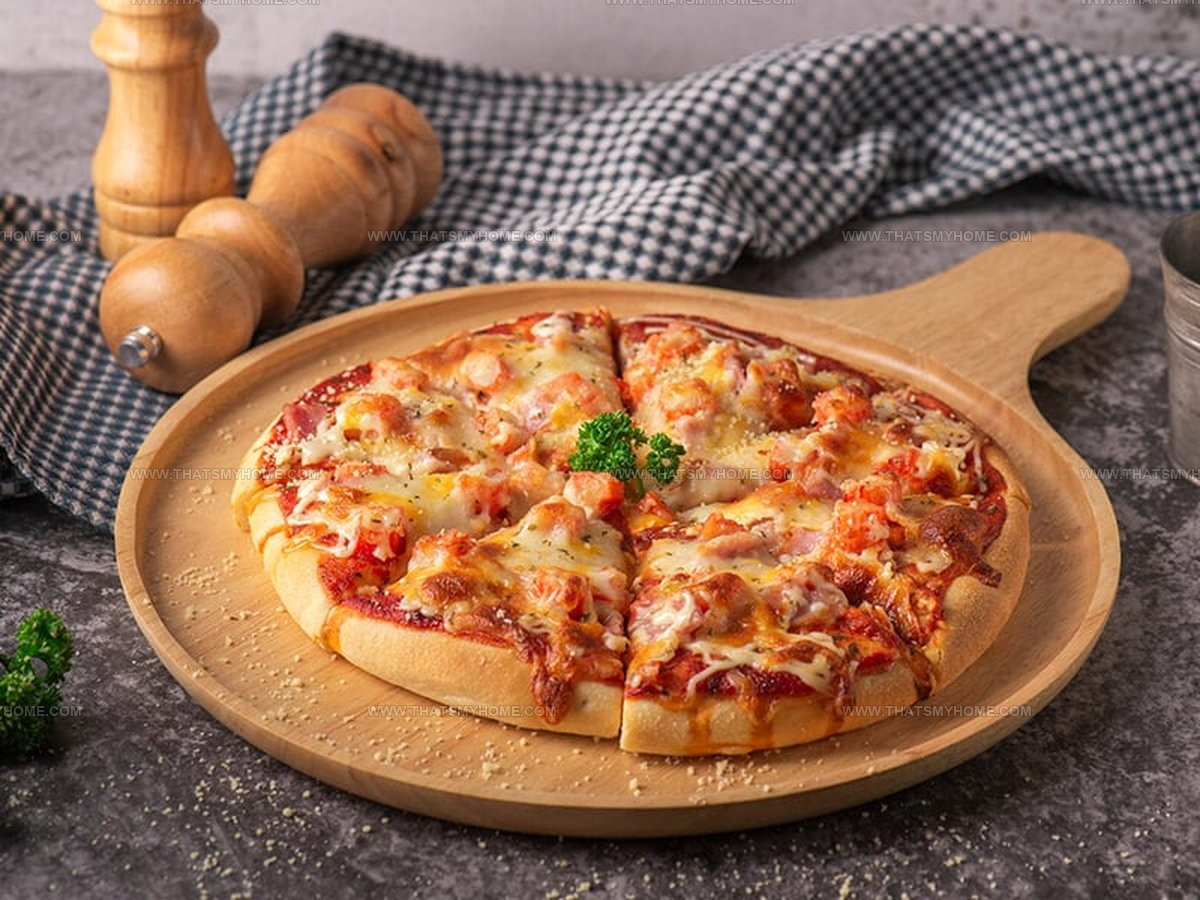
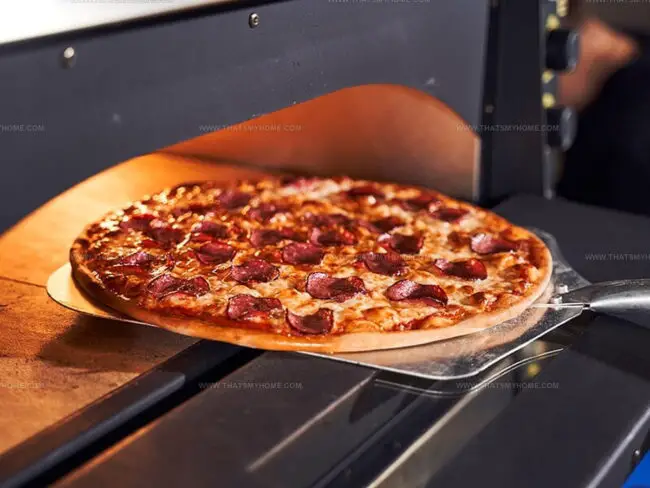
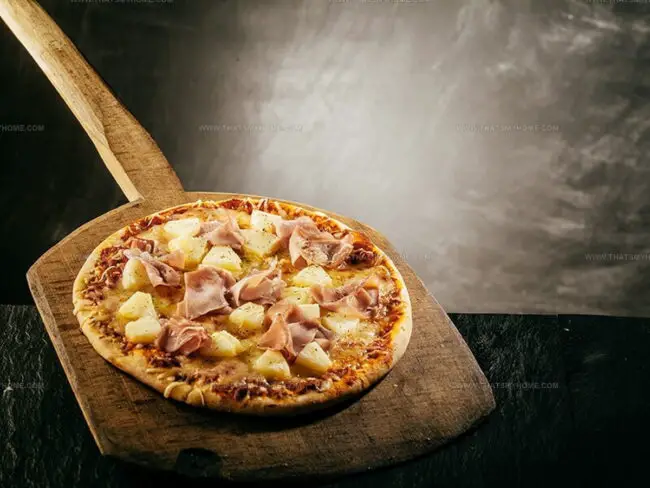
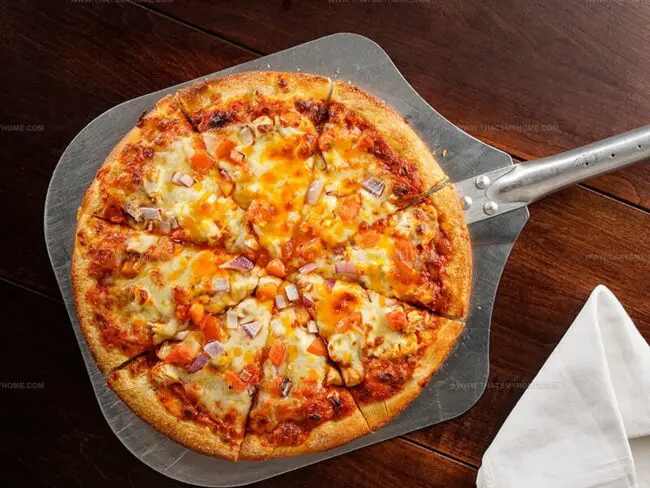
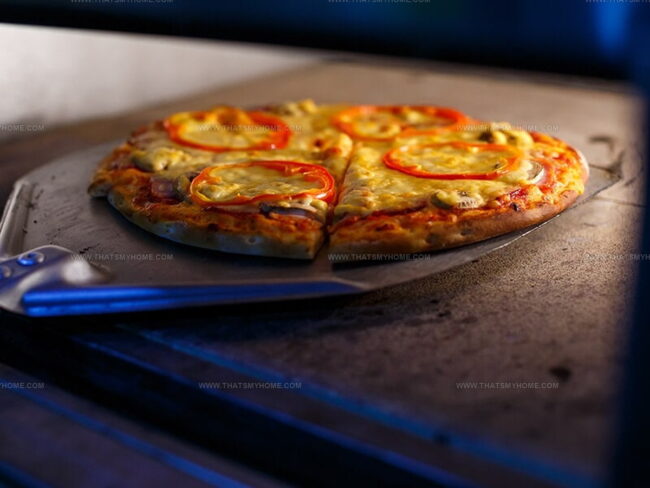
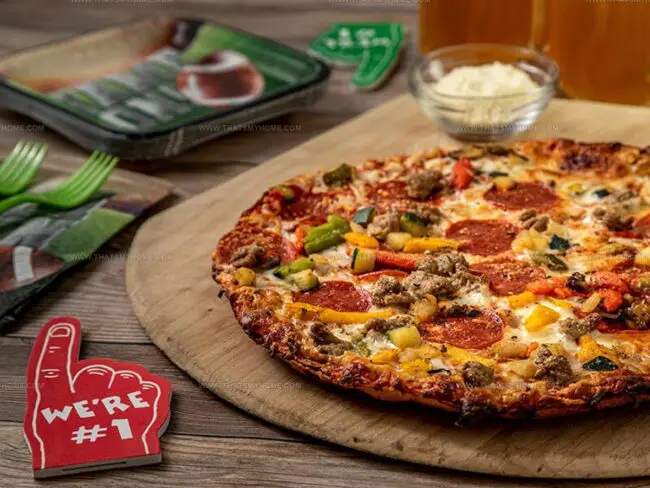
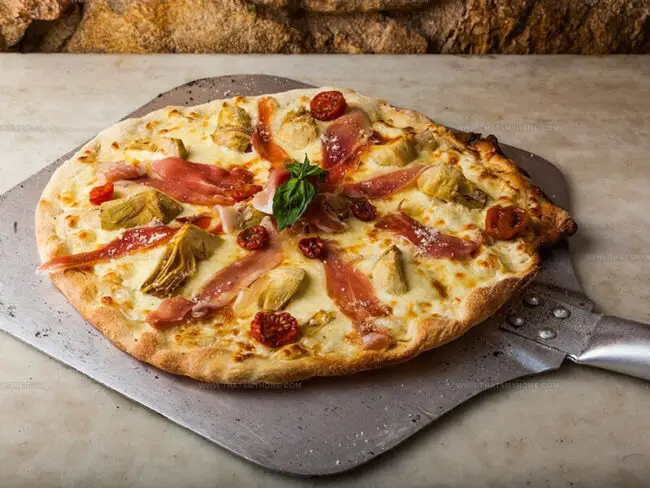
Mary Ellen
Expertise
Education